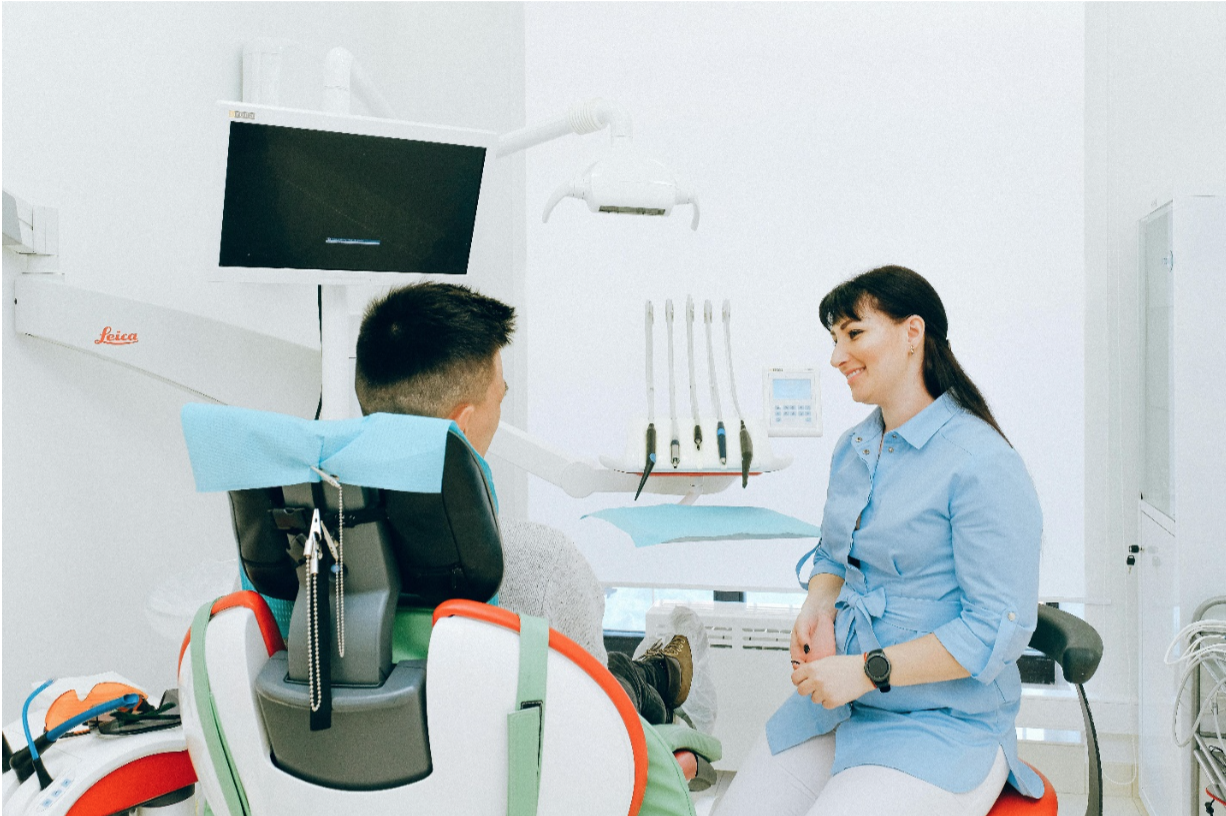Dental health is often overlooked, yet it plays a significant role in our overall well-being. From enjoying our favorite foods to confidently flashing a smile, our teeth are essential for various aspects of daily life. However, dental issues can arise, causing discomfort and affecting our quality of life. If you’re experiencing a sudden toothache in Plano, don’t hesitate to reach out to an Emergency Dentist Plano in the area for immediate relief. In this comprehensive guide, we’ll delve into the world of dental problems, focusing particularly on cavities, their prevention, treatment, and broader implications on oral and overall health.
Contents
Understanding the importance of dental health
Maintaining good dental health is crucial for several reasons. Not only does it contribute to proper digestion by facilitating chewing, but it also impacts our speech and overall appearance. Additionally, poor dental hygiene can lead to various oral health issues, including cavities, gum disease, and tooth loss.
Common Dental Problems
Dental problems are prevalent and can affect individuals of all ages. Some of the most common issues include cavities, gum disease, tooth sensitivity, and oral infections. These problems can stem from various factors, including poor oral hygiene, dietary habits, genetics, and lifestyle choices.
Cavities: The Primary Concern
Cavities, also known as dental caries or tooth decay, are one of the most prevalent dental issues worldwide. They occur when bacteria in the mouth produce acids that erode the enamel, leading to the formation of small holes or cavities in the teeth. Without proper intervention, cavities can progress and cause pain, infection, and even tooth loss.
Causes of cavities
Cavities develop due to a combination of factors, including:
Poor oral hygiene: Inadequate brushing and flossing allow plaque to accumulate on the teeth, increasing the risk of decay.
High sugar and starch intake: Foods and beverages rich in sugars and carbohydrates promote bacterial growth and acid production in the mouth.
Acidic drinks: Consuming acidic beverages such as sodas and fruit juices can weaken tooth enamel, making it more susceptible to decay.
Symptoms and signs
The signs of cavities may vary depending on their severity and location. Common symptoms include:
Toothache or tooth sensitivity, especially when consuming hot, cold, or sweet foods.
Visible pits or holes in the teeth.
White, brown, or black spots on the tooth surface.
Pain when biting down or chewing.
Preventive Measures
Preventing cavities starts with adopting good oral hygiene practices and making healthy lifestyle choices. Here are some tips to reduce the risk of tooth decay:
Oral hygiene practices
Brushing: Brush your teeth at least twice a day with fluoride toothpaste, using proper technique and spending at least two minutes each time.
Flossing: Clean between your teeth daily with dental floss or interdental cleaners to remove plaque and food debris.
Rinsing: Use an antimicrobial mouthwash to reduce bacteria and freshen breath.
Dietary tips for cavity prevention
Limit sugary foods and drinks: Minimize consumption of candies, sodas, and other sugary snacks that promote tooth decay.
Choose tooth-friendly foods: Opt for fruits, vegetables, dairy products, and lean proteins that support dental health.
Drink water: Stay hydrated by drinking plenty of water throughout the day, which helps rinse away food particles and bacteria.
Regular dental check-ups
Schedule routine exams: Visit your dentist regularly for check-ups and professional cleanings to detect and prevent dental issues.
Consider preventive treatments: Ask your dentist about fluoride treatments and dental sealants to strengthen enamel and protect against cavities.
Treatment Options
If cavities develop despite preventive measures, various treatment options are available to restore dental health:
Fillings and sealants
Composite fillings: Tooth-colored fillings made of composite resin are used to fill cavities and restore the natural appearance of teeth.
Dental sealants: Thin plastic coatings applied to the chewing surfaces of molars and premolars help prevent decay by sealing off grooves and pits where bacteria can accumulate.
Root canal therapy
Procedure: Root canal therapy involves removing infected or damaged pulp from the tooth’s interior, cleaning and disinfecting the root canal, and sealing it to prevent further infection.
Purpose: This procedure saves the tooth from extraction and relieves pain caused by severe decay or infection.
Dental crowns
Usage: Crowns are tooth-shaped caps placed over damaged or weakened teeth to restore their strength, functionality, and appearance.
Materials: Crowns can be made of various materials, including porcelain, ceramic, metal, or a combination, depending on the patient’s needs and preferences.
Complications of Untreated Cavities
Ignoring cavities can lead to serious complications and compromise both oral and overall health. Some potential risks include:
Tooth decay progression
Spread of infection: Untreated cavities can deepen and extend into the tooth’s pulp, leading to abscess formation and severe pain.
Tooth loss: Advanced decay may necessitate tooth extraction, resulting in functional and aesthetic concerns.
Gum disease risks
Gingivitis: Prolonged exposure to bacteria from cavities can cause inflammation of the gums, leading to gingivitis and, if left untreated, periodontitis.
Periodontal complications: Gum disease can result in gum recession, bone loss, and tooth mobility, jeopardizing the stability of surrounding teeth.
Impact on overall health
Systemic implications: Oral infections and inflammation have been linked to systemic conditions such as cardiovascular disease, diabetes, and respiratory infections.
Reduced quality of life: Chronic dental issues can affect eating, speaking, and social interactions, leading to discomfort and embarrassment.
Special Considerations
Certain life stages and conditions require special attention to dental health:
Dental care during pregnancy
Importance of prenatal dental visits: Expectant mothers should prioritize dental care to prevent pregnancy-related oral health issues such as gum disease and pregnancy tumors.
Safe treatments: Dental procedures can be performed safely during pregnancy, but elective treatments are typically postponed until after delivery.
Dental issues in children
Early intervention: Children are susceptible to cavities and other dental problems, emphasizing the importance of establishing good oral hygiene habits from a young age.
Fluoride supplementation: Fluoride treatments and supplements may be recommended to strengthen developing teeth and prevent decay.
Senior dental health
Age-related changes: Aging can affect oral health, leading to issues such as dry mouth, gum recession, and tooth wear.
Regular assessments: Older adults should undergo regular dental exams to address age-related concerns and maintain oral function and comfort.
Advanced Techniques and Technologies
Advancements in dentistry have revolutionized treatment approaches and enhanced patient outcomes. Some cutting-edge techniques and technologies include:
Laser dentistry
Precision and efficiency: Lasers are used for various dental procedures, including cavity detection, gum reshaping, and soft tissue surgeries, offering greater precision and faster healing.
Digital imaging
Diagnostic accuracy: Digital X-rays and intraoral scanners provide detailed images of the teeth and jaw, aiding in diagnosis and treatment planning while minimizing radiation exposure.
Nanotechnology in dentistry
Enhanced materials: Nanomaterials are used to develop stronger, more durable dental restorations and antimicrobial agents, improving treatment longevity and infection control.
Natural Remedies and Alternative Therapies
In addition to conventional treatments, some individuals explore natural remedies and alternative therapies for dental care:
Oil pulling
Traditional practice: Oil pulling involves swishing oil (such as coconut or sesame oil) in the mouth for several minutes to remove toxins and bacteria, purportedly promoting oral hygiene.
Herbal mouthwashes
Antimicrobial properties: Herbal mouthwashes containing ingredients like tea tree oil, peppermint, and sage may help reduce plaque and gingival inflammation, supporting gum health.
Probiotics for oral health
Microbial balance: Probiotic supplements containing beneficial bacteria strains may help restore microbial balance in the mouth, potentially reducing the risk of cavities and gum disease.
Mental Health and Dental Well-being
Dental visits can evoke anxiety and fear in some individuals, affecting their willingness to seek timely care. Addressing mental health concerns is essential for promoting dental well-being:
Anxiety and dental visits
Common fears: Fear of pain, needles, or dental procedures may deter individuals from scheduling regular dental appointments, leading to neglect of oral health.
Coping strategies for dental phobia
Open communication: Discussing fears and concerns with the dentist can help alleviate anxiety and establish trust, allowing for a more comfortable treatment experience.
Relaxation techniques: Deep breathing, visualization, and mindfulness exercises can help reduce stress and promote relaxation during dental visits.
Dental Emergencies
Despite preventive efforts, dental emergencies may arise, requiring prompt attention and intervention:
Toothaches
Causes: Toothaches can result from various factors, including dental decay, infection, trauma, or underlying oral health conditions.
Immediate relief: Over-the-counter pain relievers, cold compresses, and avoiding hard or sticky foods can help alleviate discomfort temporarily.
Broken or knocked-out teeth
Emergency response: If a tooth is broken or knocked out, it’s essential to seek dental care immediately. Preserve the tooth in milk or saline solution and avoid touching the root to maximize chances of successful re-implantation.
Immediate steps for dental emergencies
Contacting a dentist: Call your dentist or seek emergency dental care for prompt evaluation and treatment.
First aid: Administer basic first aid measures to alleviate pain and prevent further damage until professional help is available.
The Role of Genetics in Dental Health
Genetic factors can influence susceptibility to dental issues and shape individual oral health outcomes:
Genetic predispositions to dental issues
Inherited traits: Genetic variations may increase the risk of conditions such as enamel defects, malocclusions, and susceptibility to gum disease.
Family history: Understanding familial patterns of dental problems can help individuals and their dentists anticipate potential issues and tailor preventive strategies accordingly.
Global Trends in Dental Care
Access to dental services and approaches to oral health promotion vary worldwide, reflecting cultural, socioeconomic, and healthcare system differences:
Access to dental services worldwide
Disparities: Disparities in dental care access persist across regions and populations, with underserved communities facing challenges in obtaining affordable and quality services.
Public health initiatives: Government initiatives, community dental clinics, and outreach programs aim to improve access to dental care and promote oral health education globally.
Innovations in dental care delivery
Tele-dentistry: Remote consultations and digital platforms enable patients to access dental services and advice from anywhere, expanding reach and convenience.
Mobile dental clinics: Mobile units equipped with dental equipment and staffed by healthcare professionals bring essential services to underserved areas and vulnerable populations.
Community Outreach and Dental Education
Educating the public about proper oral hygiene practices and preventive measures is crucial for reducing the prevalence of dental issues:
Importance of dental education programs
Early intervention: School-based dental education initiatives teach children about the importance of oral hygiene, fostering lifelong habits and reducing dental disease burden.
Community engagement: Dental professionals participate in community outreach events, offering screenings, education, and referrals to underserved populations.
Volunteer opportunities in dentistry
Humanitarian efforts: Dentists, hygienists, and dental students volunteer their time and expertise to provide free or low-cost dental care to disadvantaged communities locally and abroad.
Impact and fulfillment: Volunteering in dentistry not only improves access to care but also enhances professional satisfaction and promotes social responsibility among dental professionals.
Conclusion
Dental health is integral to overall well-being, and addressing dental issues requires a multifaceted approach encompassing prevention, treatment, and education. By understanding the causes of common dental problems, adopting preventive measures, and seeking timely care, individuals can maintain healthy smiles and improve their quality of life. Embracing advancements in dental technology, promoting oral health literacy, and addressing barriers to care are essential steps toward achieving global dental wellness.











